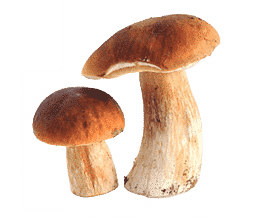
How Long Do Shrooms Stay in Your System?
Are you curious about how long shrooms linger in your body? Magic mushrooms, known for their hallucinogenic effects, can be a topic of concern, especially if you’re facing a drug test. While shrooms might give you a wild ride with intense feelings and vivid hallucinations, understanding how long they linger in your system is essential.
This article will explore the duration of shroom’s presence in your system, providing insights for those curious about the drug’s impact and potential consequences.
Key Takeaways
Psilocybin from shrooms typically stays in your system for 24 hours or less when it comes to urine tests, making it unlikely to be detected in most routine drug tests.
While standard tests don’t usually screen for shrooms, specialized tests like hair follicle tests can detect psilocybin for up to 90 days, though this method is rarely used.
Body composition, dosage, and the specific species of mushrooms consumed can all impact how long shrooms remain detectable in your system.
How Shrooms Affect Your System
When you consume shrooms, specifically those containing the active compound psilocybin, your body undergoes a series of biochemical processes that result in the psychedelic experience. Here’s how shrooms affect your system:
1. Psilocybin to Psilocin Conversion
Once ingested, psilocybin is rapidly converted by your liver into psilocin, the compound responsible for the hallucinogenic effects. Psilocin then enters your bloodstream and reaches the brain, primarily affecting serotonin receptors.
2. Impact on the Brain
Psilocin interacts with serotonin receptors, primarily the 5-HT2A receptors, which are involved in mood, perception, and cognition. This interaction leads to changes in sensory experiences, including visual and auditory hallucinations, altered perception of time, and shifts in thought patterns.
The intensity of the effects can vary based on factors like the amount consumed, individual sensitivity, and environmental influences.
3. Physical Effects
In addition to the psychological effects, shrooms can also produce physical symptoms. These may include:
Dilated Pupils
One of the most noticeable physical effects of psilocybin mushrooms is dilated pupils. This results from the drug’s interaction with the serotonin receptors in the brain, which control pupil size.
Increased Heart Rate and Blood Pressure
Psilocin can stimulate the autonomic nervous system, leading to heightened cardiovascular activity.
Nausea
Some users may experience gastrointestinal discomfort, particularly during the trip’s onset.
Temperature Fluctuations
Users may experience changes in body temperature, leading to sensations of feeling hot or cold. It is often accompanied by sweating or chills as the body’s autonomic system reacts to the psilocin.
Muscle Weakness or Tremors
Some people report feeling physically weak or experiencing slight tremors during their trip. These effects are usually mild but can be unsettling if unexpected.
Changes in Thought Patterns
Shrooms can lead to deep introspection, creative thinking, and altered thought processes. Some users describe it as a feeling of interconnectedness or a new perspective on life.
However, this can also result in confusion or difficulty concentrating on simple tasks.
4. Duration of Effects
The effects of shrooms usually last 4 to 6 hours, with the peak intensity occurring about 2 to 3 hours after consumption. Users may experience intense visual distortions, emotional shifts, and altered thinking during this time.
After the peak, the effects gradually diminish, but some residual effects, such as mild visual distortions or mood changes, can persist for a few hours.
5. Potential Risks
While shrooms are generally considered low-risk in terms of physical toxicity, they do carry psychological risks. A negative experience, or “bad trip,” can lead to intense fear, paranoia, and confusion.
Additionally, combining shrooms with other substances or using them in an unstable or unsafe environment can increase the likelihood of adverse effects.
How Long Do Shrooms Last?
The effects of shrooms, or psilocybin-containing mushrooms, typically last 4 to 6 hours. The detection time can vary depending on the amount consumed, individual metabolism, and the specific type of shrooms ingested.
Here’s a breakdown of what to expect:
Onset
Shroom effects can start within 20 to 40 minutes after consumption. These effects may include seeing and hearing things differently, feeling like time is moving differently, and experiencing changes in mood and thoughts.
Peak Effects
The effects of shrooms are most intense 2 to 3 hours after taking them. During this time, you may experience strong visual hallucinations, intense feelings, and profound shifts in your thinking.
Come Down
After the peak, the effects gradually taper off over 2 to 3 hours. By the end of this period, most of the hallucinogenic effects have subsided, although some lingering effects, like mild visual distortions or mood changes, can persist.
Aftereffects
Some individuals report experiencing lingering effects, such as altered mood or perception, for several hours after the primary effects of shrooms have subsided. In rare instances, these aftereffects may persist into the following day.
It’s important to note that while the primary effects of shrooms last a few hours, their impact on your mental and emotional state can last much longer, depending on the experience.
What Type Of Drug Tests Can Detect Shrooms?
Several types of drug tests can detect shrooms, though it’s worth noting that shrooms aren’t typically included in standard drug testing panels. However, specialized tests are available if there is a specific reason to test for psilocybin or psilocin, the active compounds in shrooms.
Urine Drug Tests: While most routine drug tests do not screen for shrooms, specialized urine tests can detect psilocin for up to 24 hours after ingestion. These tests are more commonly used in forensic or legal settings.
Blood Tests: Psilocin can be detected in blood for approximately 15 hours after consuming shrooms. Blood tests are more invasive and generally used to detect recent shroom use, but they are not commonly employed.
Saliva Tests: Psilocybin and psilocin are detectable in saliva for a few hours after ingestion, but due to their short detection window, saliva tests are rarely used to detect shrooms.
Hair Follicle Tests: Hair follicle tests can detect psilocybin for up to three months after use. However, this method is less common for testing shrooms compared to other substances like cannabis, cocaine, and opioids.
In most cases, unless there is a specific reason to test for shrooms, such as in certain legal or forensic scenarios, routine drug tests won’t include psilocybin or psilocin in their screening panels.
Factors That Affect How Long Mushrooms Stay in Your System
Several factors can influence how long psilocybin-containing mushrooms, commonly known as shrooms, stay in your system. By understanding these factors, you can better understand how long shrooms might be detectable in your system and how your body metabolizes these hallucinogenic substances.
1. Dosage
The dosage of shrooms consumed significantly affects how long they remain detectable. Higher doses of psilocybin can take longer for the body to metabolize and eliminate, extending the detection wi
2. Metabolism
Individual metabolism rates differ significantly. People with faster metabolisms generally process and eliminate psilocybin more rapidly than those with slower metabolisms.
Factors such as age, activity level, and overall health can impact your metabolic rate.
3. Body Composition
The length of time shrooms stay in your system can be influenced by your body composition and body fat percentage. Psilocin, the active compound in shrooms, can bind to fat cells, which may extend its detection period in your body.
4. Mushroom Species
Different species of psychedelic mushrooms contain varying levels of psilocybin and psilocin. Some species may have higher concentrations, leading to longer detection times after consumption.
5. Frequency of Use
Regular or heavy users may have psilocybin or its metabolites linger in their system longer than occasional users. It is due to a potential build-up in the system, which can extend the detection window.
6. Other Substances
If shrooms are consumed in combination with other substances, it can affect how quickly or slowly your body processes them. For instance, alcohol or other drugs can alter the metabolism of psilocybin, potentially prolonging its presence in your system.
7. Liver and Kidney Function
The liver primarily metabolizes psilocybin into psilocin, and the kidneys help excrete it from your body. If either of these organs is compromised or not functioning optimally, it could slow down the process, causing shrooms to stay in your system longer.
8. Individual Health Conditions
Underlying health conditions, like liver, kidney, or metabolic issues, can affect how long psilocybin stays in your system. Conditions like liver disease or thyroid disorders may slow down the elimination process.
The Bottom Line
Shrooms may give you a mind-bending experience, but they don’t linger long in your system. For most people, psilocybin and psilocin are out of their bodies within a day or two, especially when it comes to standard drug testing.
However, suppose you’re facing a specialized test or have concerns about long-term detection. In that case, it’s crucial to understand that factors like dosage, metabolism, and the type of test used can all affect how long shrooms are detectable.
Whether you’re an occasional user or just curious, knowing how long shrooms stay in your system can help you make informed decisions. If you’re ever in doubt, consult a healthcare professional.
And remember, while shrooms may not stay in your system for long, their effects, whether good or bad, can leave a lasting impression. Discover more about magic mushroom with Mind Mend.




